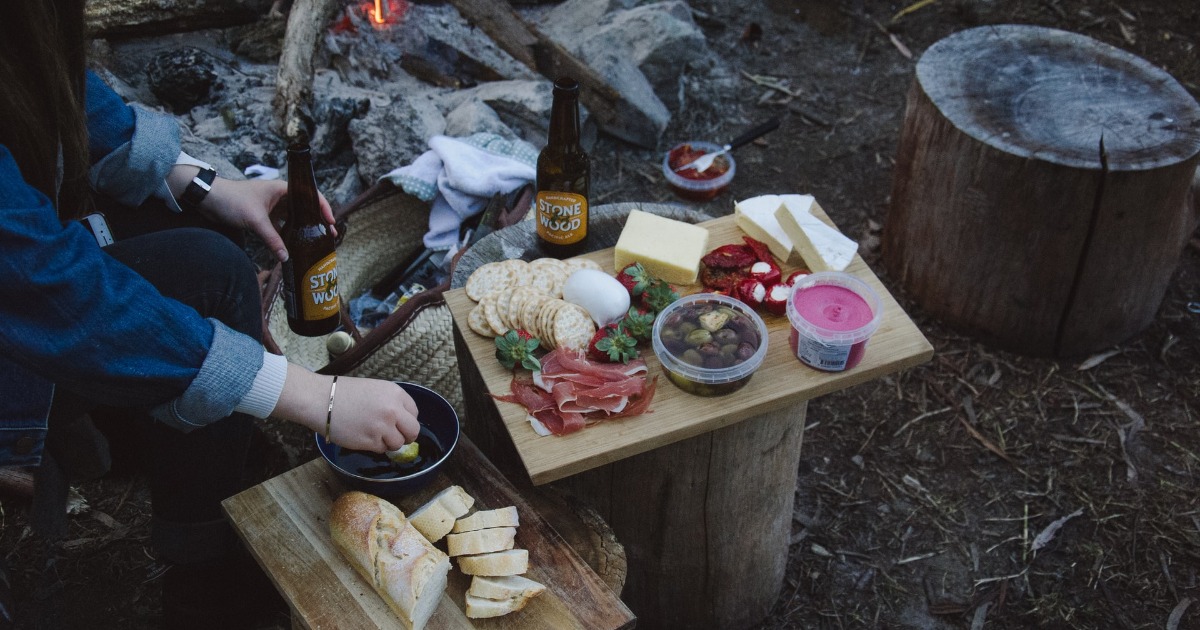Campfire Cooking Recipes: What can you cook over a campfire?
- 29 May 2022 09:50
- 1453

There are many things you should consider when planning your next camping trip. First, a campfire is no different than any other open-fire cooking. There are many recipes you can use, whether you cook on the stovetop, over a grill, or in a campfire. You can actually cook almost any recipe over a campfire if you have the right equipment.
You can just grab any recipe book and use it. There are some important considerations to make when planning campfire cooking. These include the type of cooking that you can do with your equipment and what kinds of ingredients you will have.
These are my tips and thoughts on how to plan great meals for your next camping trip.
Ingredients
When planning campfire cooking, one of the most important things to consider is what ingredients you have at your disposal. You won't be allowed to bring perishable food unless you're on a short camping trip or staying in a luxurious cabin. In addition, you can bring perishables in ice packs, dry ice, and an insulated container if your trip is short, such as between one and three days. You may not be able to bring this, or you will be staying for a longer time, so you should plan differently.
Some preserved and dried foods can be eaten raw without cooking (trail mix or nuts, beef jerky, etc.). Some can be reconstituted or used as flavoring agents in cooked dishes. Crumbled beef jerky, for example, can add flavor and protein to stews, soups, and other campfire cooking recipes. No matter what base ingredients you choose for your trip, seasonings can make the difference between great campfire cooking and bland campfire cooking. Don't forget salt and pepper!
Equipment
The types of campfire cooking recipes that you can make also depend on the campfire equipment you have or can access. You can cook many different dishes with a skillet, dutch oven, or pot. You can cook almost anything without a grill grate, tripod, or skillet. Simply place them on the open fire, using gloves. You can roast small items like sausages, hot dogs, marshmallows, and more with a campfire grill skewer. Aluminum foil can be used to wrap food and put them near the fire. This foil-cooking works well for all kinds of vegetables, including roasts. You need to be very careful that the food doesn't burn. It is easy to use a campfire tripod or grill grate to expand your cooking options. This allows you to grill, roast, or hang anything over the fire, and can be used for a variety of foods, including individual cuts of meat or vegetables. There are many campfire cooking options that you can make with these tools. To make setting up camp easier, you can bring a variety of portable grills.
Living off the Wild
You have two options when camping. One is to hunt, trap, or collect wild animals. The other is to go out into the wilderness and find food. This is a topic I can't adequately address. You should always be cautious when you eat wild plants. Although there are very few poisonous plants, it is not recommended that you eat wild food. There are very toxic mushrooms, such as Amanita (or the "death cap" mushroom), that are picked wild and are fatal to many people each year. You may have more experience hunting this type of mushroom or are an experienced hunter. Make sure you have plenty of salt and pepper, as well as olive oil. Remember to season your food before cooking it.
Some other suggestions
As I have already mentioned, make sure you bring enough seasoning to enhance the flavor of your base ingredients. There are many good things you can bring with you that can be used in many different ways. Dried foods are ideal for long-distance trips, as they can be stored in dried form. You can eat nuts, trail mix, beef jerky, and dried fruits plain, or you can use them as flavoring agents for soups, stews, and other dishes. Onion and garlic, thicker skinned, dried vegetables (winter squashes and root vegetables) are some other ingredients that will keep well for moderately long trips.
For a quick and easy side dish or meal, a foil package or dutch oven can be used. It's filled with potatoes, onions, garlic, chopped squash, and other ingredients. Canned foods are also good but can be a little more difficult to transport. To add depth and complexity to soups, stews, and other dishes, a few cans of chopped or whole tomatoes are a great option. These are also good options for things that need boiling, such as pasta and rice. However, you should only consider them if you have a large enough pot to boil the water in and have plenty of water to boil.
